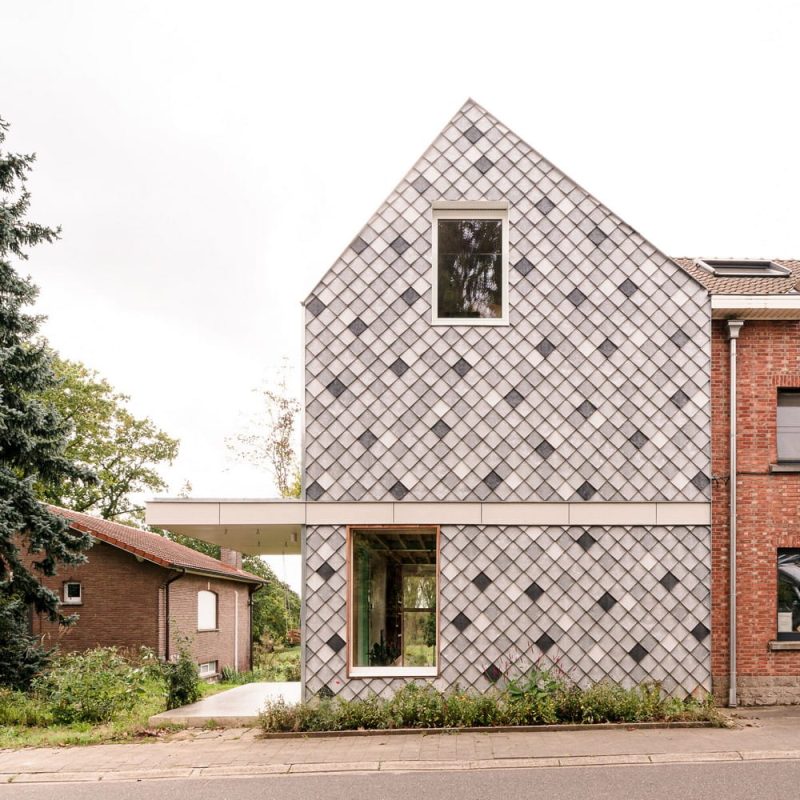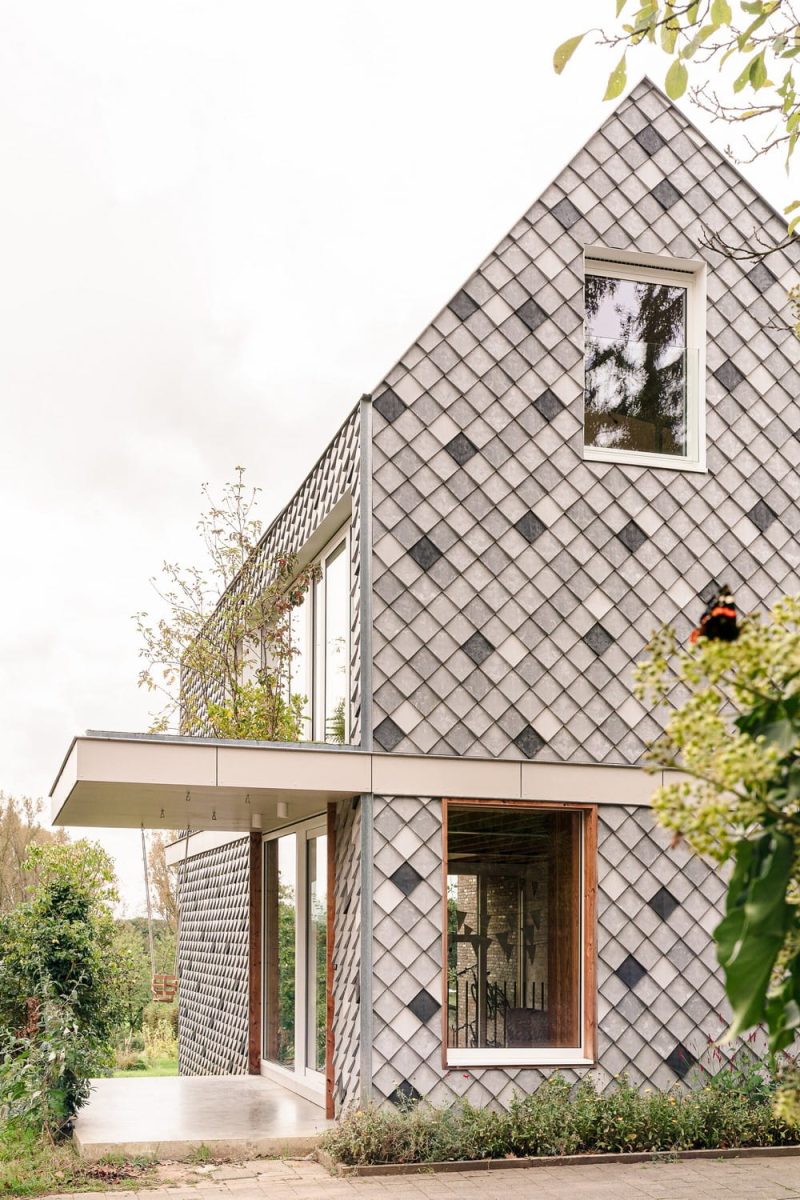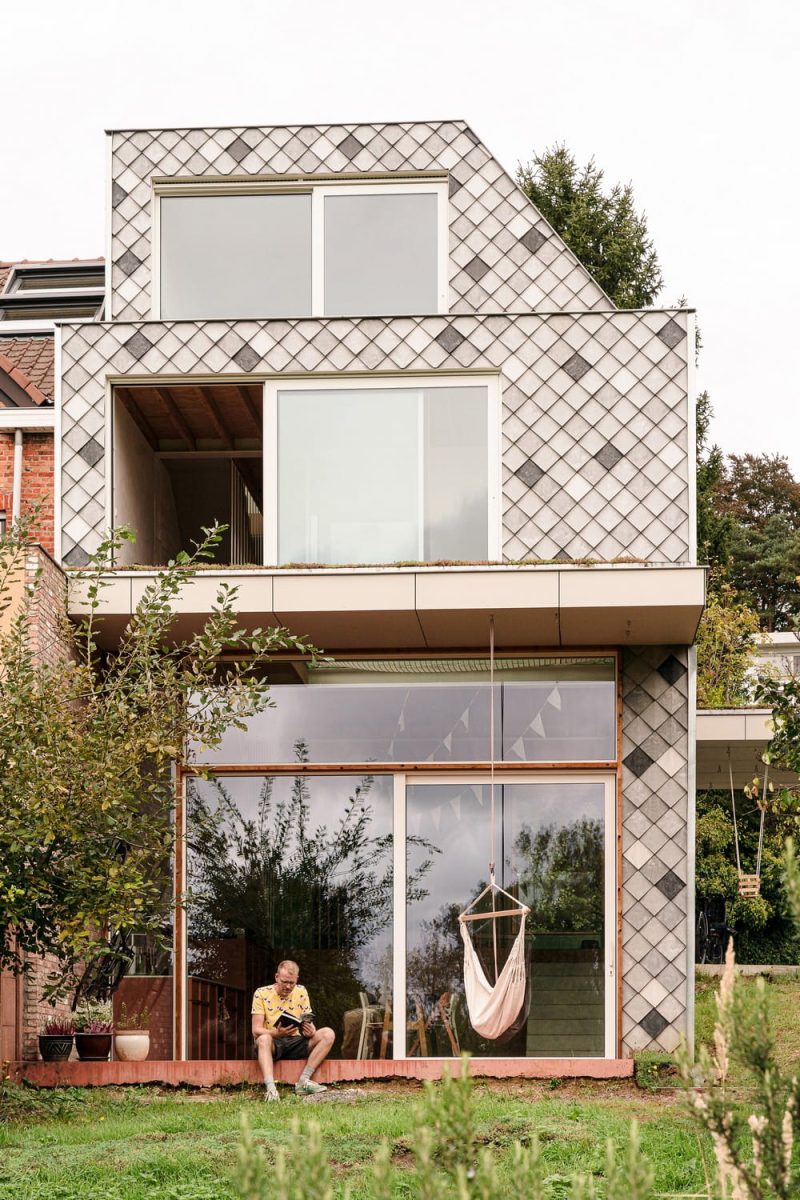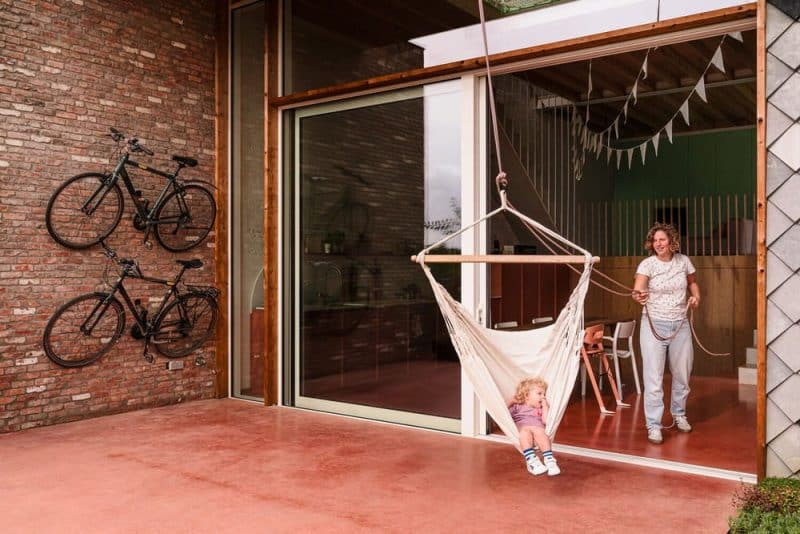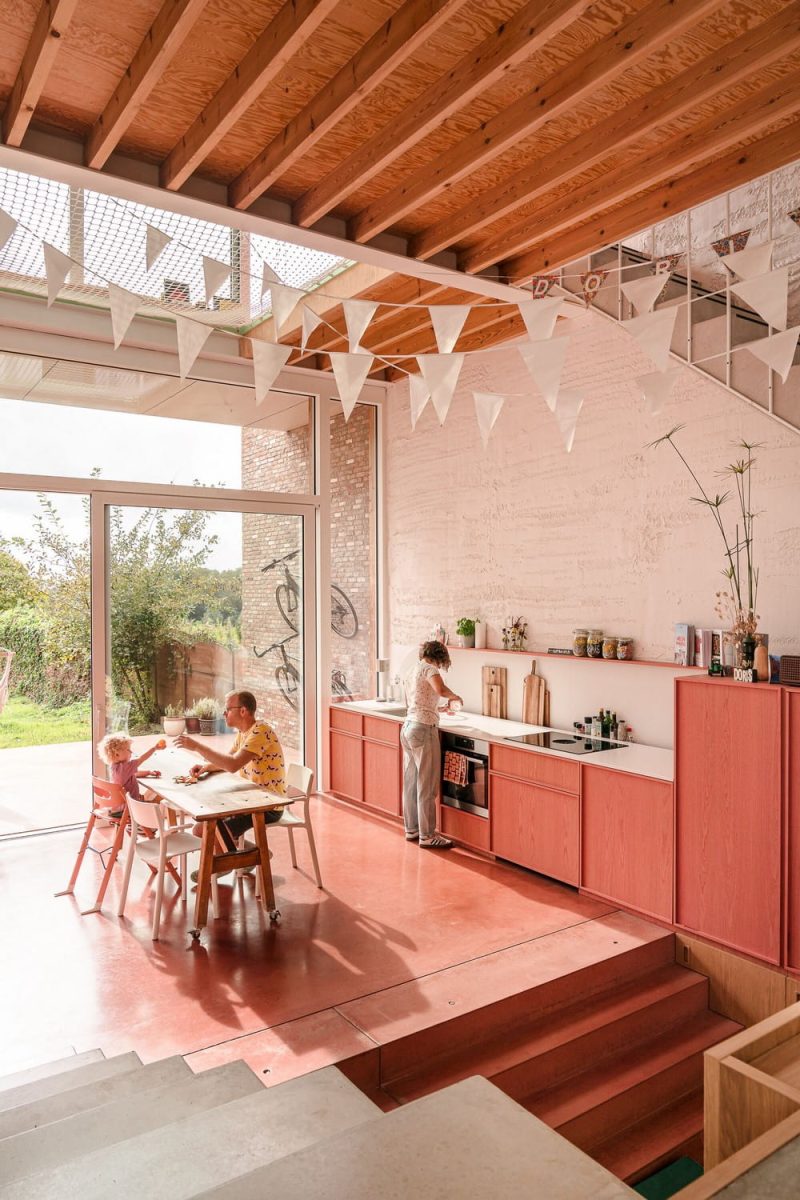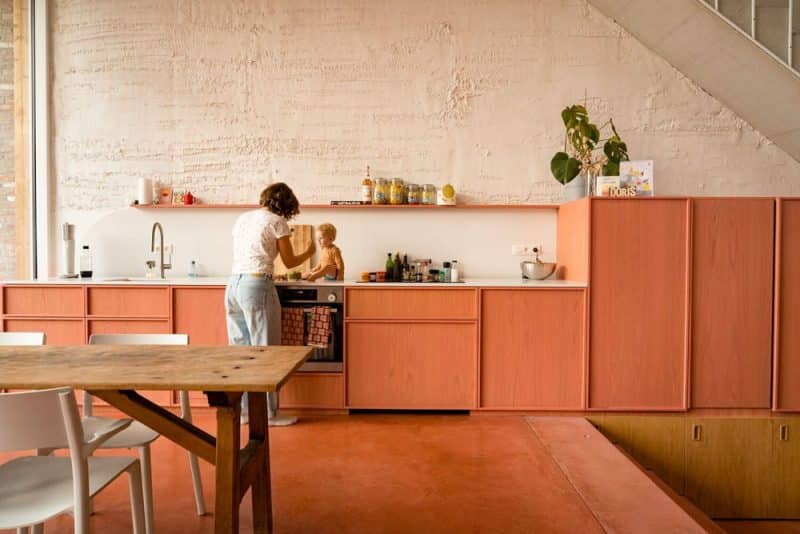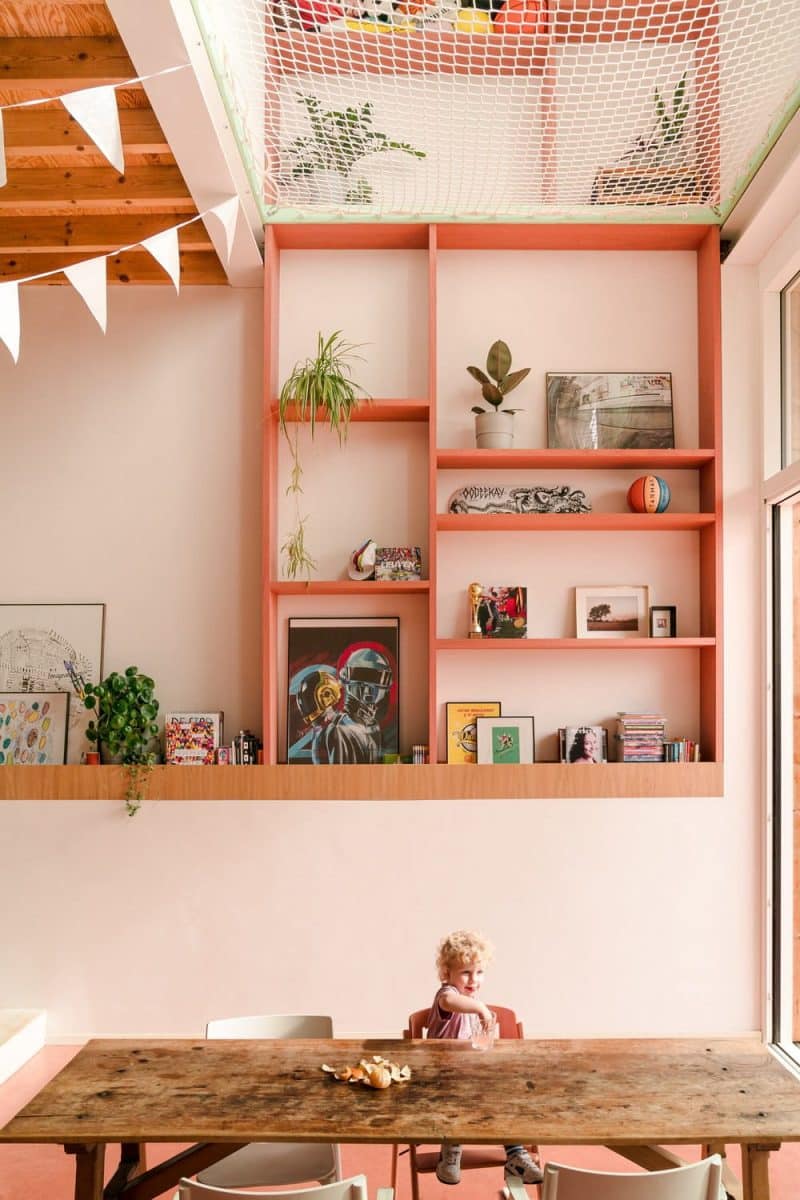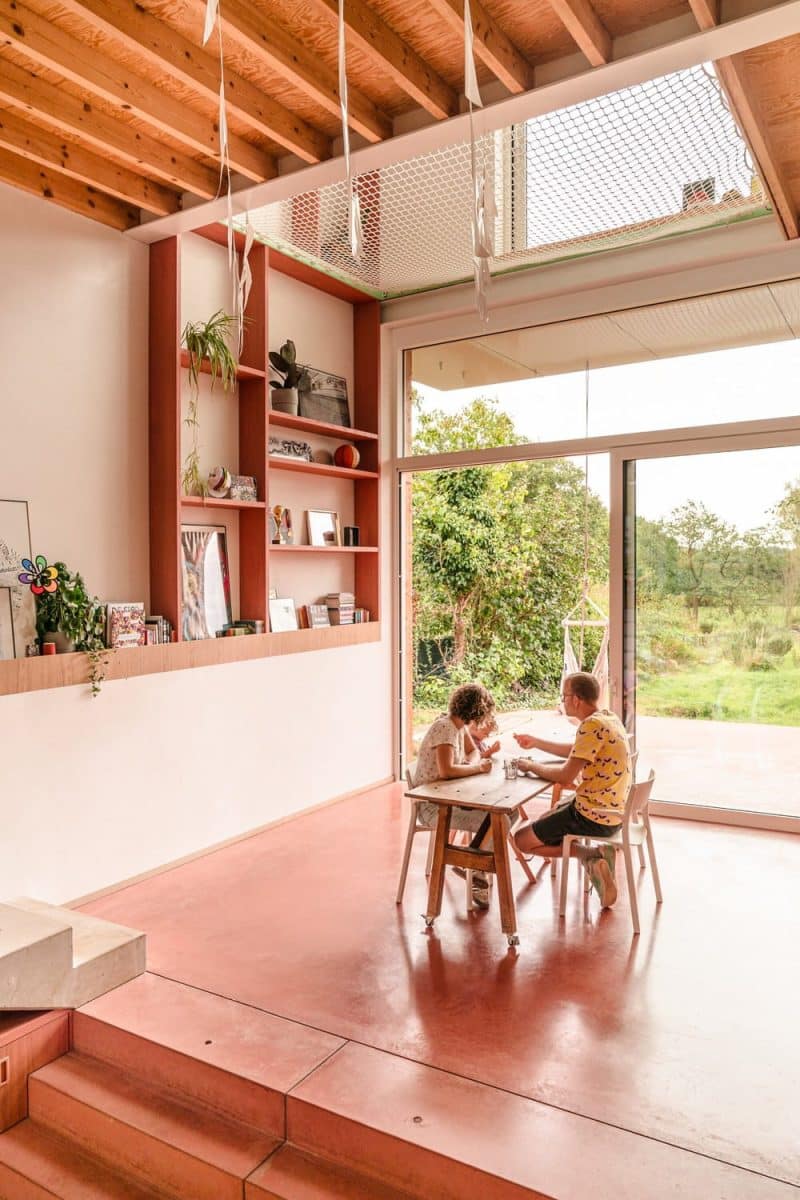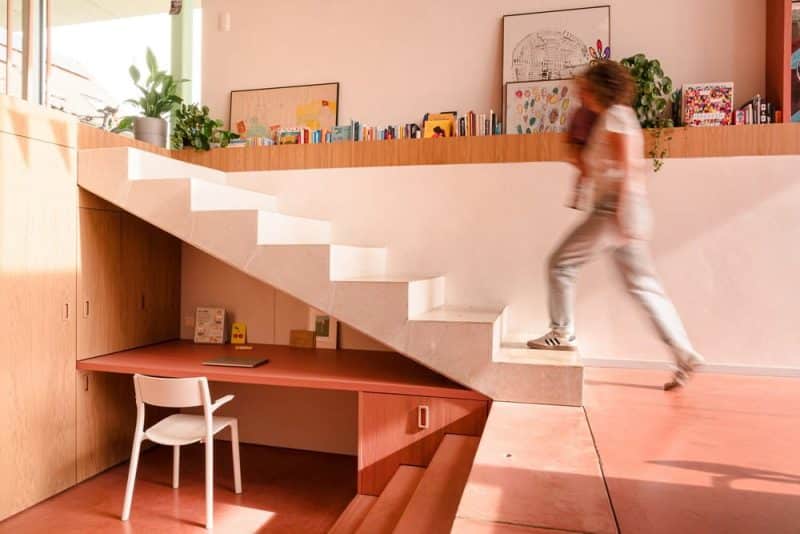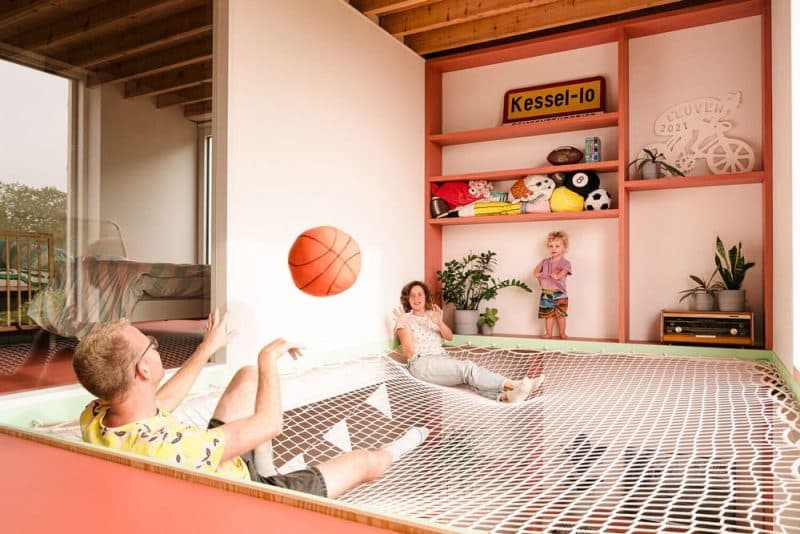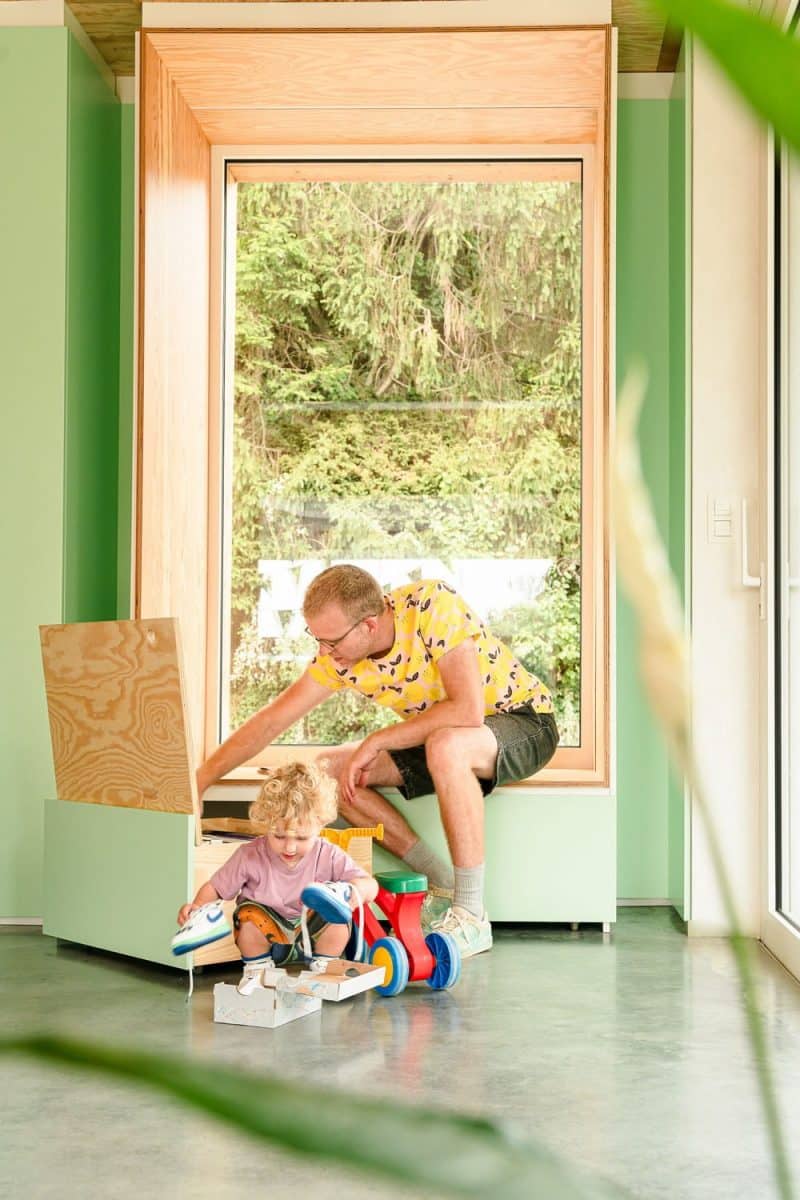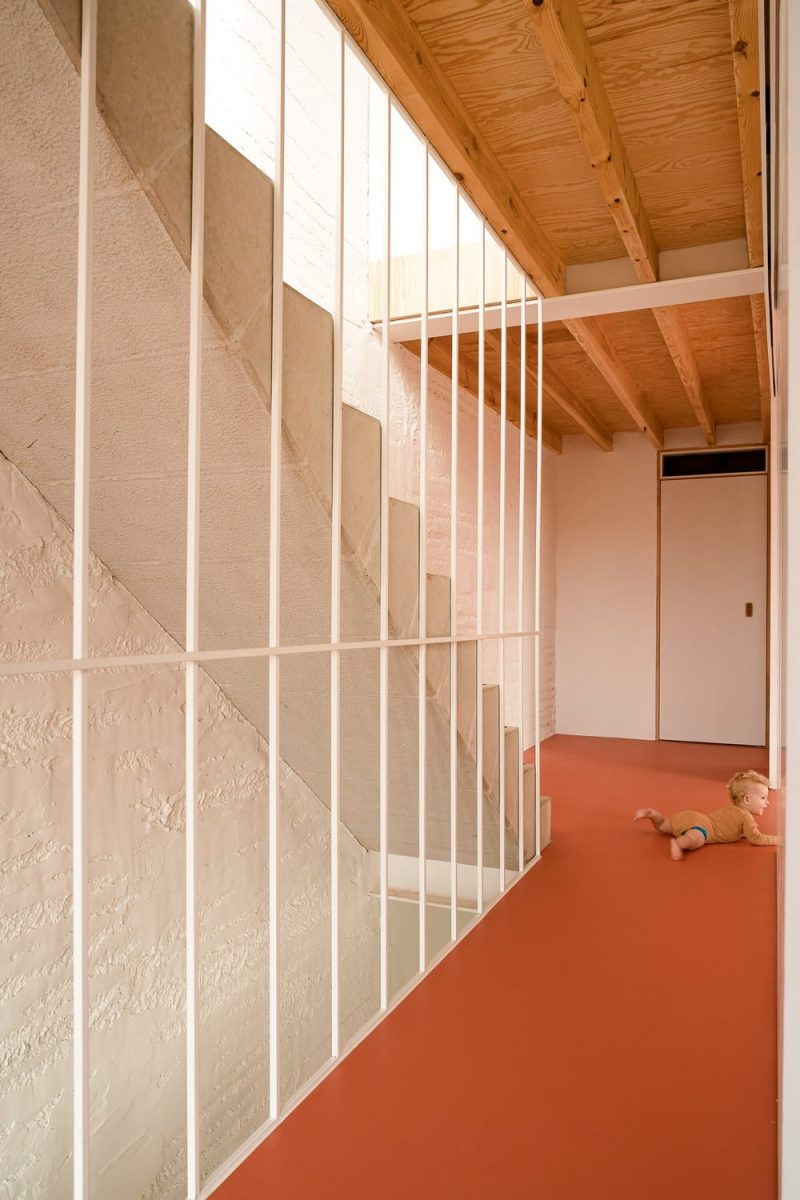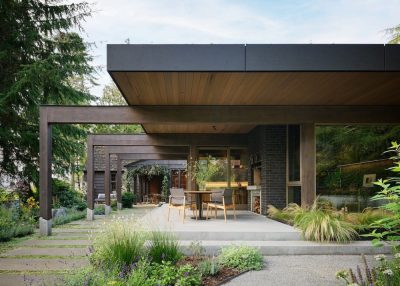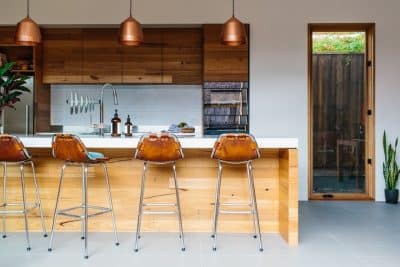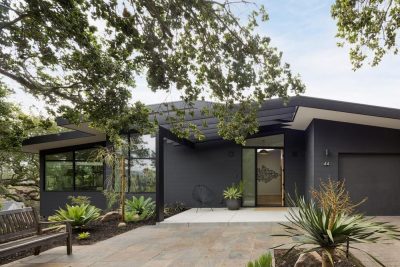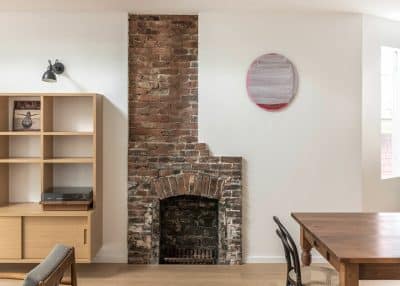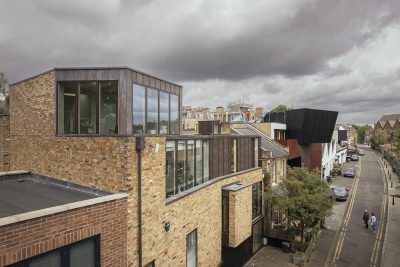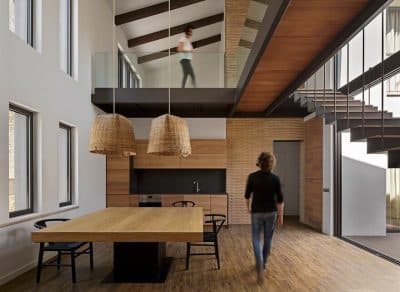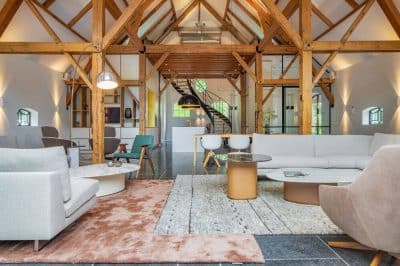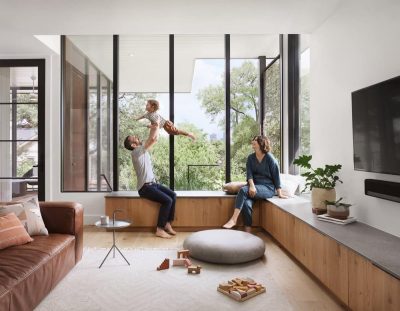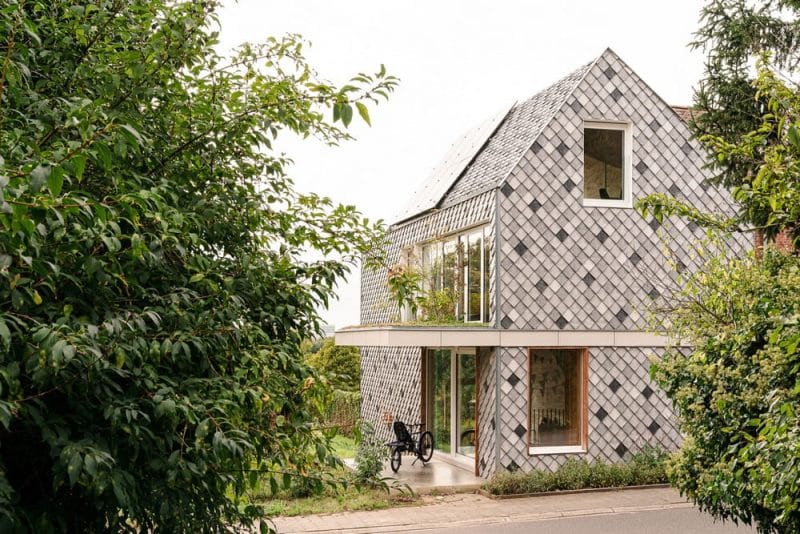
Project: Dragon House
Architecture: no.ma architecten
Lead Architects: Wim Van den berge, Cedric Rosier
Location: Belgium
Area: 234 m2
Year: 2023
Photo Credits: Stijn Knapen
Dragon House by no.ma architecten was born from the vision of a young couple seeking to transform their recently purchased house into a flexible, challenging, playful, and inspiring family home with a unique character. Primarily attracted by its location and the stunning view of Vlierbeek Abbey, the clients admitted that they had little affection for the house itself. Moreover, the original structure lacked any meaningful connection between the rooms or to the garden and its surroundings.
Transforming the Spatial Experience
To address these issues, no.ma architecten designed a new volume with a high‑performance insulation shell positioned on top of the basement floor. Consequently, the design team focused on creating thorough spatiality with split‑levels, internal diagonal sightlines, and precisely planned window openings. As a result, the boundaries between inside and outside gradually fade, and the spaces transform flexibly over time.
Balancing Opaque and Transparent Elements
Furthermore, the design alternates between opaque and glass surfaces. On one hand, the closed surfaces effectively block the view from neighbors and conceal less attractive vistas. On the other hand, the expansive glass areas draw rich light into the house and frame views of the sky, the farmland, and the abbey. In addition, two large canopies serve dual purposes: they cover the bike port and terrace while also creating green zones at the level of the sleeping area and the bathroom. These canopies further provide passive sun protection, and the furniture was designed with flexibility in mind.
A Bold, Sustainable Facade
In addition, the new volume is sheathed in a plastic roof and facade slats, following the upcycle principle. This innovative choice makes Dragon House the first project in Belgium to feature plastic diamond slats. Not only does this decision reflect sustainable quality, but it also introduces a distinctive color nuance and shading effect. Inside, white walls contrast with exposed steel girders, visible wooden beams, and red‑pigmented concrete on the ground floor and terrace. Moreover, bright red vinyl on the upper floors, oak veneer, green‑painted furniture elements, and pink cement tiles add vibrant accents that contribute to the overall character of the home.
Seamless Indoor-Outdoor Flow
The bike port, located to the left of the house, forms a covered entrance from the street side, leading directly into the first living space. From there, a staircase ascends to the upper floors, while a “lazy” staircase descends approximately a meter and a half to the kitchen at the level of the backyard. In this way, the red‑pigmented concrete floor flows through several wall‑to‑wall steps into a basement‑level seating area. Additionally, a small desk area was built under the lazy staircase in the sunken living room, and the kitchen cabinets merge into a storage closet that includes doors to the tech room and guest toilet in the existing basement.
Flexible Living Spaces for Family Life
On the second floor, the design accommodates two children’s bedrooms, a bathroom, and a second toilet. At the rear, a void was created above the kitchen, into which a trap net was stretched. This design element establishes a diagonal line of sight with the floor below, allowing sunlight to penetrate deeper into the ground floor and enhancing the sense of spaciousness. Moreover, the rear facade was fitted with large sliding windows on each floor, which seamlessly connect the interior spaces with the outdoors.
In summary, Dragon House by no.ma architecten stands as a bold reinterpretation of an outdated structure. By integrating innovative spatial solutions, sustainable materials, and a harmonious interplay between opaque and transparent elements, the project transforms the house into a dynamic, flexible home that grows and adapts with its inhabitants.
